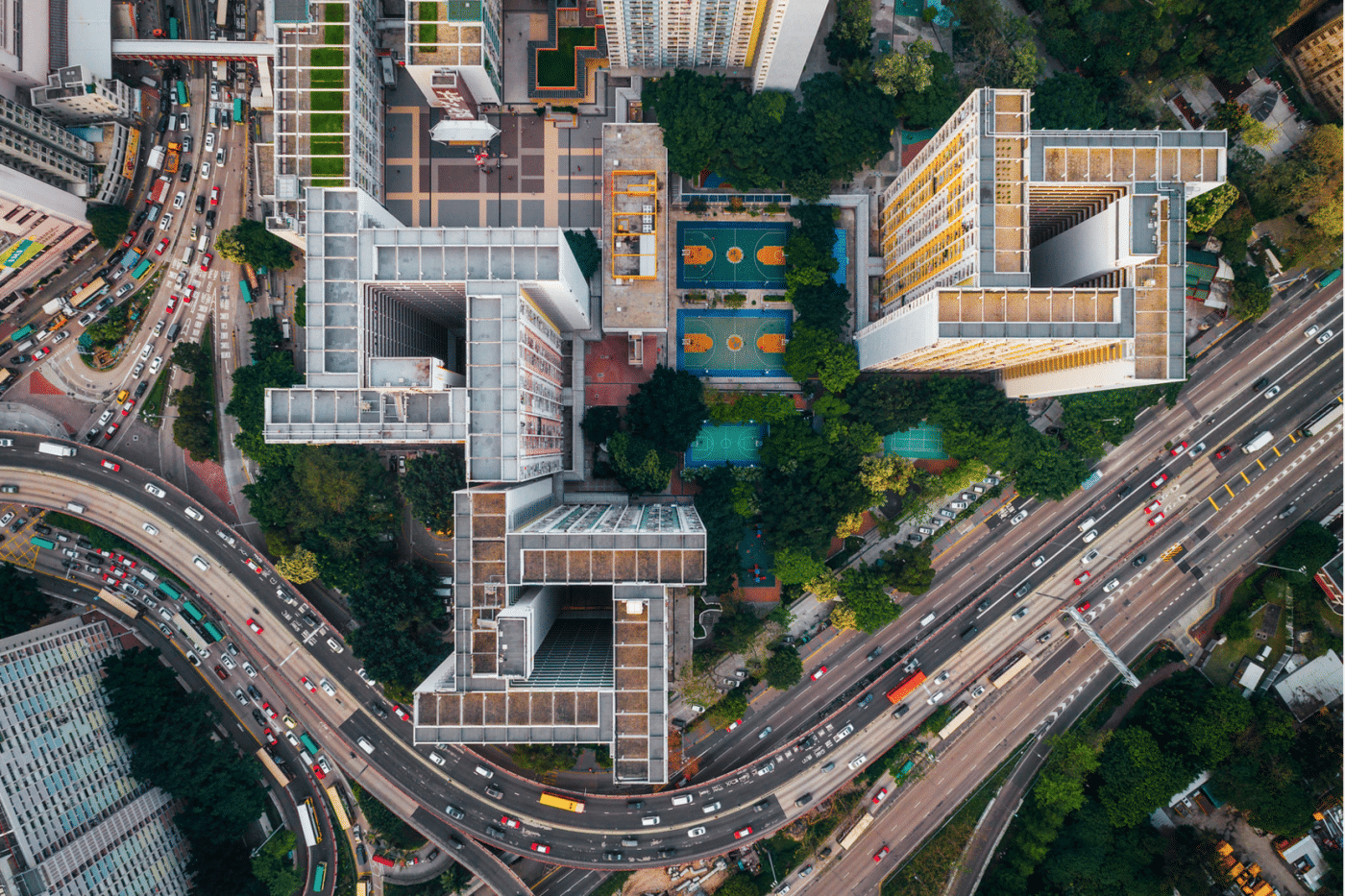
Photo: Timo Lieber. This post may contain affiliate links. Please read our disclosure for more info.
Aerial photography captures some of the most awe-inspiring views of Earth that we’ve ever seen. Taking cameras to new heights—literally—the vantage points allow us to experience the world from which humans were never meant to do so.
Listen beautiful relax classics on our Youtube channel.
History of Aerial Photography
Not long after the inaugural image was taken on a camera did adventurous photographers start to snap pictures from the air. The first to attempt this top-down technique was French photographer and balloonist Gaspard-Félix Tournachon. In 1858, he successfully snapped pictures as the camera was tethered to a balloon. Unfortunately, those photographs no longer exist, so the earliest surviving images are from two years later in 1860. They were taken by James Wallace Black and Samuel Archer King and are titled Boston, as the Eagle and the Wild Goose See It. As you might imagine, the photos featured a view of Boston about 2,000 feet in the sky.
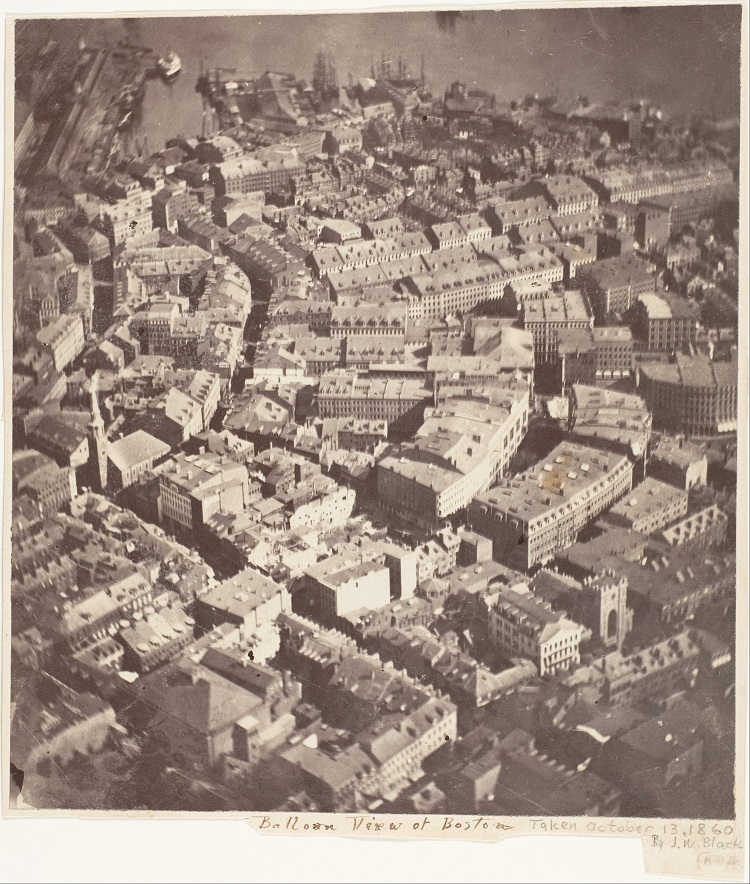
“Boston, as the Eagle and the Wild Goose See It” by James Wallace Black and Samuel Archer King
Photo courtesy of Metropolitan Museum of Art. Gilman Collection, Purchase, Ann Tenenbaum and Thomas H. Lee Gift, 2005
In 1888, a technique called kite aerial photography (KAP) was made popular by Frenchman Arthur Batut. Rather than the balloon method, he attached the camera to a timer and kite—which also included a lit fuse.
As technology become increasingly advanced, aerial photography found a place in both military and commercial settings. In 1912, Frederick Charles Victor Laws of the British Royal Flying Corps saw its usefulness in intelligence gathering. By 1915, the German trenches were in the midst of being photographed. The usefulness in war-time allowed the field rapid advancement; it behooved military operations to efficiently gather reconnaissance images from the sky. Around this time, the first “purpose-built” aerial camera was created by English aviation pioneer John Moore-Brazhazon. Here, the camera was placed in the floor of an aircraft triggered by the pilot.
It wasn’t until 1919 that the field was used commercially. Although too expensive for individuals to own, aerial cameras were used in survey and mapping land. In addition to these practical applications, aerial photography has helped—and continues to help—us understand our past. Known as aerial archaeology, it allows researchers to study and understand archaeological remains by seeing it all once.
Aerial Photography Today
It seems we’ll never tire of aerial photography. Today, drone technology has give us a whole new perspective on the field. Photographers now have more control than ever when snapping a picture; with the advent of drone apps and smartphones as second monitors, they can line up the perfect shot. “What I like most about working with drones is that we can see things we normally don’t have access to,” photographer Andy Yeung tells us in an email. “Plus, drones add a layer between traditional aerial pictures and ground pictures, making the creative process more interesting.”
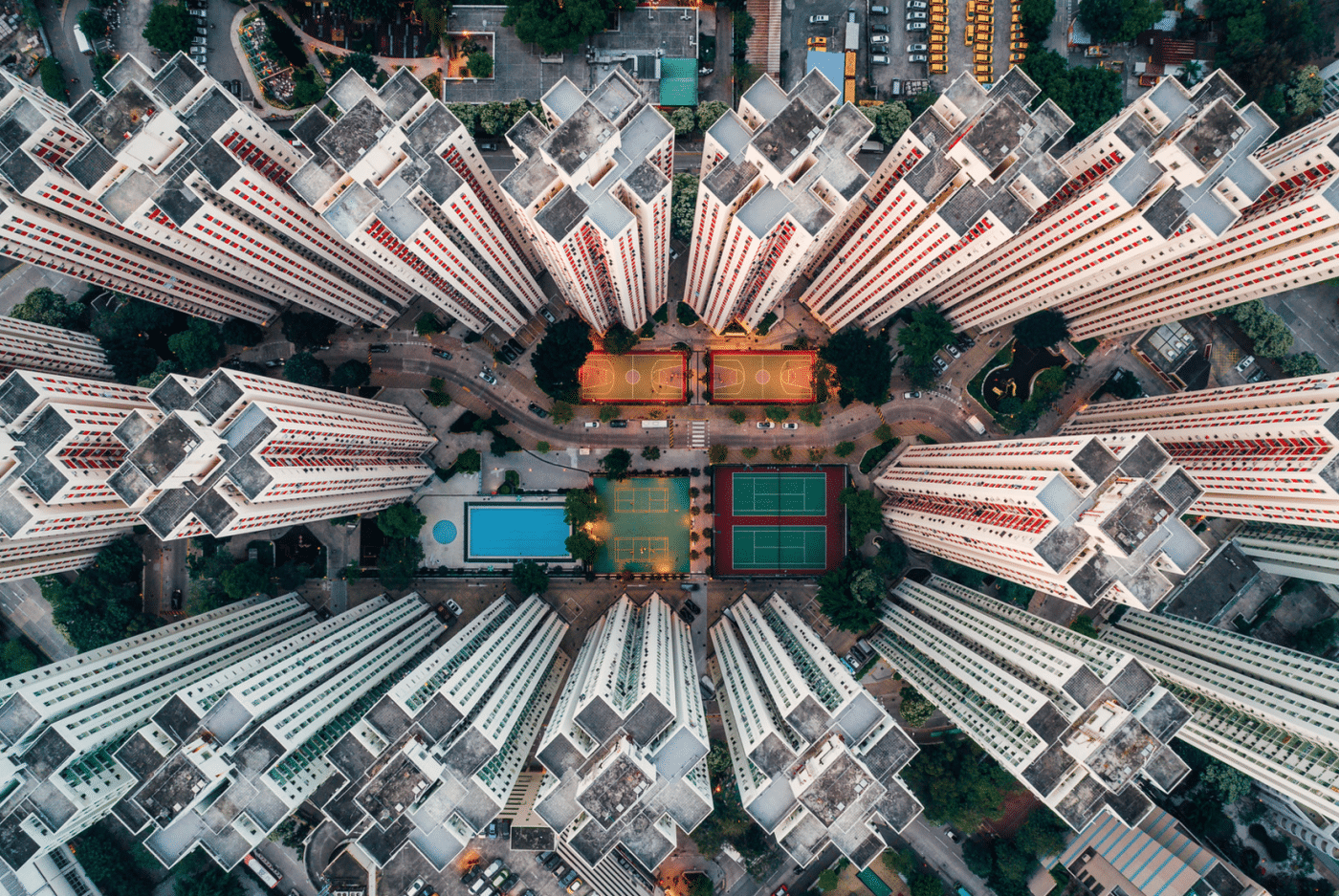
Photo: Andy Yeung
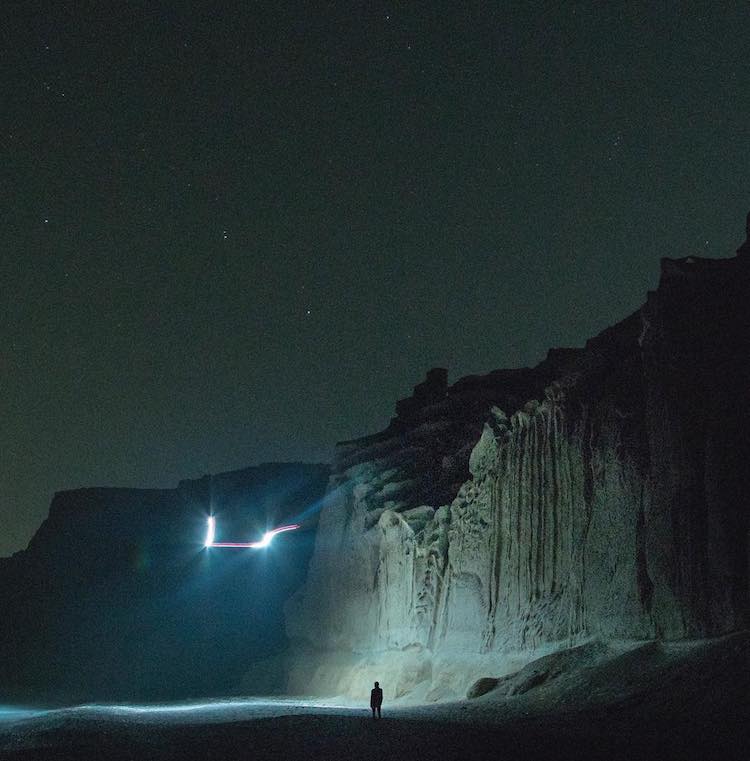
Photo: Reuben Wu
But despite the relative ubiquitousness of drone photography, creativity still shines through. We asked 10 aerial photographers about their experiences—including how they get the perfect shot. Most use drones, but there’s one adventurous soul whose process recalls the photographers of yesteryear.
We spoke to 10 aerial photographers about their experiences, tips, and gear recommendations.
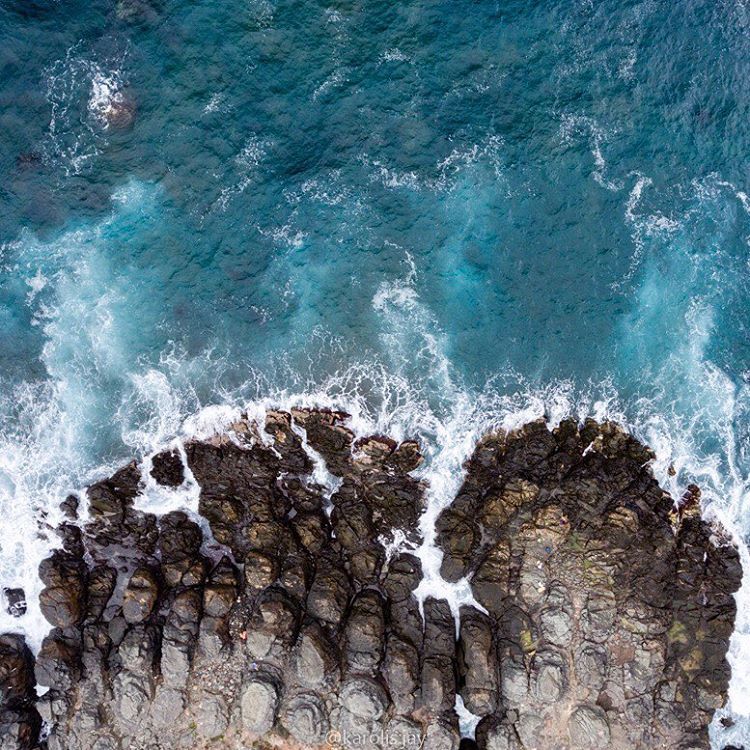
Photo: Karolis Janulis
How did you get started with aerial photography?
Karolis Janulis:
Several years ago. I used to take pictures mostly on my travels, but even then I was already looking for the spots up above with a possibility to capture a view from an unusual perspective. I became more interested in aerial photography after my first flight in a hot air balloon. In 2015, I acquired my first drone and then started implementing my photography visions from the bird’s-eye-view.
Gear recommendations: I started flying with DJI Phantom 2+ and now I fly DJI Phantom 4.
Follow Karolis Janulis on Instagram.

Photo: Karolis Janulis
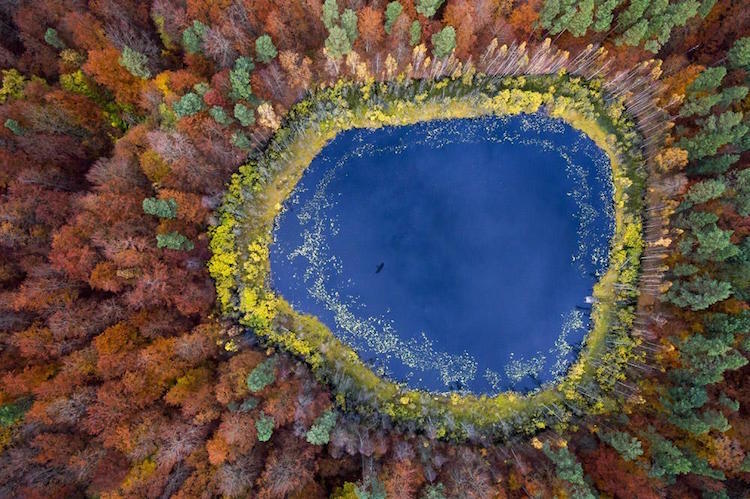
Photo: Kacper Kowalski
Kacper Kowalski:
In 1996, I learned to fly on a paraglider and started studying architecture. By 2006, my passion for flying was stronger than for architecture. I was obsessed about flying. I could not focus on designing. I thought to myself: I could take aerial photo service for other architects. Like every architect, I know the language of drawings. I can fly and earn a living with flying. So I did; I bought an engine and just did it. And then I realized that my passion for architecture is still alive. I saw the world like a map: Straight down; I saw features; I saw code of humans.
I started with aerial photography, because I wanted to have an excuse for my addiction to flying. All of my projects were born from the fact that I’ve been spending every free moment in the air. Designing and capturing in the moment, and in the space between takeoff and landing. Rarely vice versa.
Follow Kacper Kowalski on Instagram. Read more: Man’s Passion for Paragliding Results in Stunning Aerial Photography
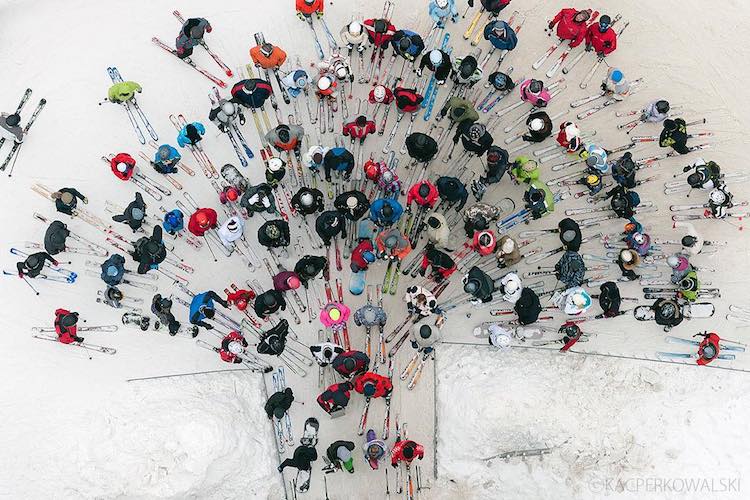
Photo: Kacper Kowalski
Andy Yeung:
When I was traveling back from Europe, I had an intimate aerial view of Hong Kong from above. Looking down, I saw gazillions of buildings soaring high into the skies and the idea of creating a drone series offering a glimpse into the reality of living in one of the most densely populated areas of the world just sprung to my mind.
Gear recommendations: DJI Phantom 3 Pro and DJI Phantom 4 Pro.
Visit Andy Yeung’s website. Read more: Stunning Aerial Shots of Fog Turning Hong Kong into a Dreamy Metropolis
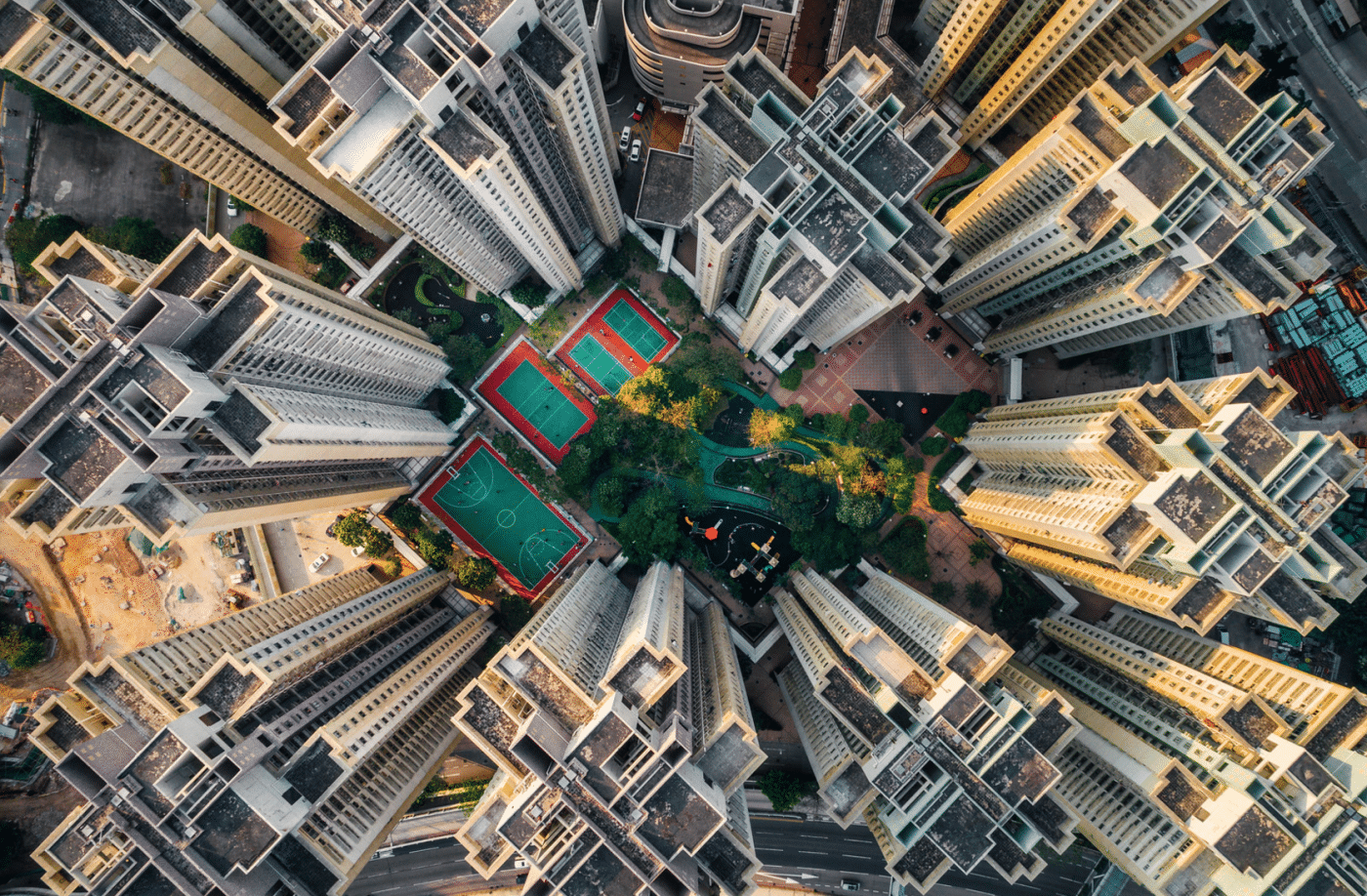
Photo: Andy Yeung
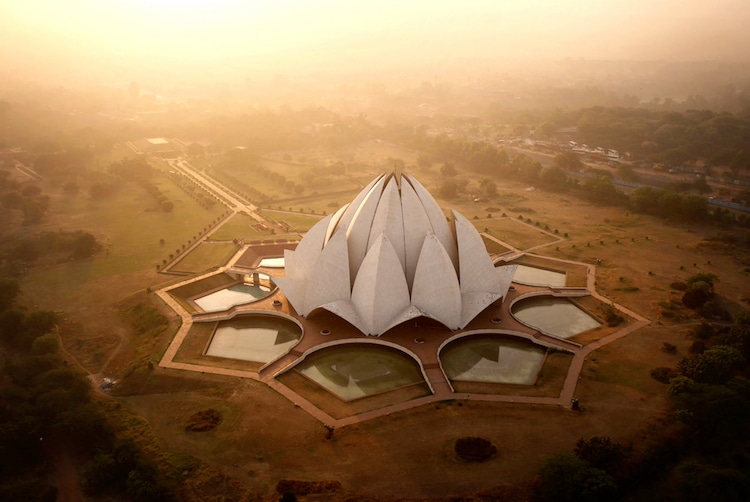
Photo: Amos Chapple
What makes a great aerial photograph?
Amos Chapple:
Getting a great aerial photograph is just about spending time out there shooting. I never expect to get a strong image on the first day. You have to feel the place out—which angle is best, when the sun catches certain details, etc. Once you know the site inside out, it’s a matter of waiting for a gift from the weather.
I’m not a religious person at all, but some mornings when there’s a layer of mist glowing in the sunrise and everything comes together in the picture… you’re walking back to the hotel through empty streets and really feel like “Wow, thank you universe.”
Gear recommendations: I would recommend any of the newer drones from DJI for someone wanting to try it out. They are the Toyotas and the Rolls Royces of the drone world.
Visit Amos Chapple’s website. Read more: Stunning Drone Photos Capture World Landmarks From a Bird’s-Eye-View
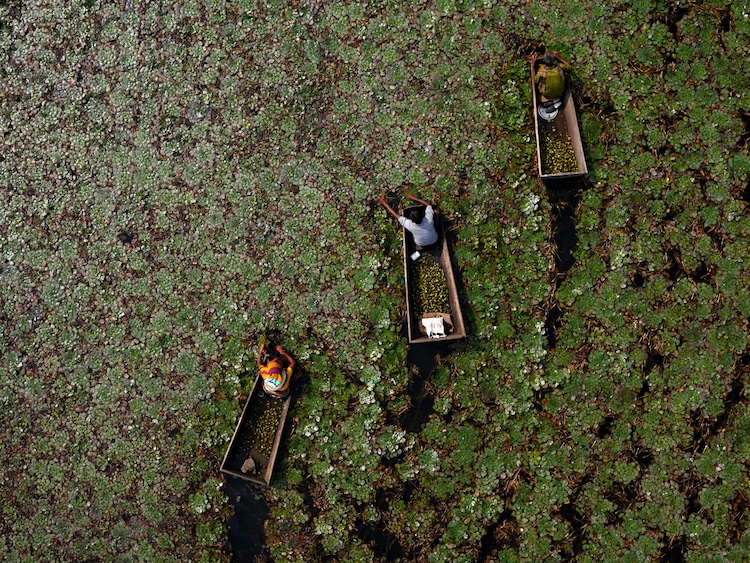
Photo: Amos Chapple
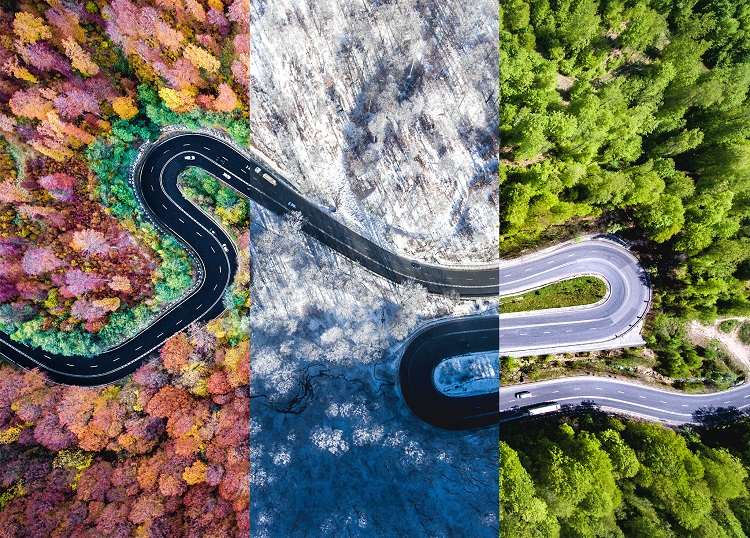
Photo: Calin Stan / TheDrone.ro
Calin Stan:
Simply, the subject and the moment of the day, the light. Like any other photograph, these are the most crucial things to have in mind. You have to spot a great subject and to photograph it in the right moment. Also, you need to be creative, to observe patterns, lines, circles, whatever helps you achieve a great composition. The drone is a really great tool, but keep in mind that the photograph is your creation.
Gear recommendations: My favorite gear for aerial photography are the drones from DJI. I’m currently using a DJI Phantom 4 for my artistic and commercial work, but also tried for a couple of weeks the new DJI Mavic Pro.
Visit Calin Stan’s website. Read more: 20 of the Most Stunning Photos Captured by Drones in 2016
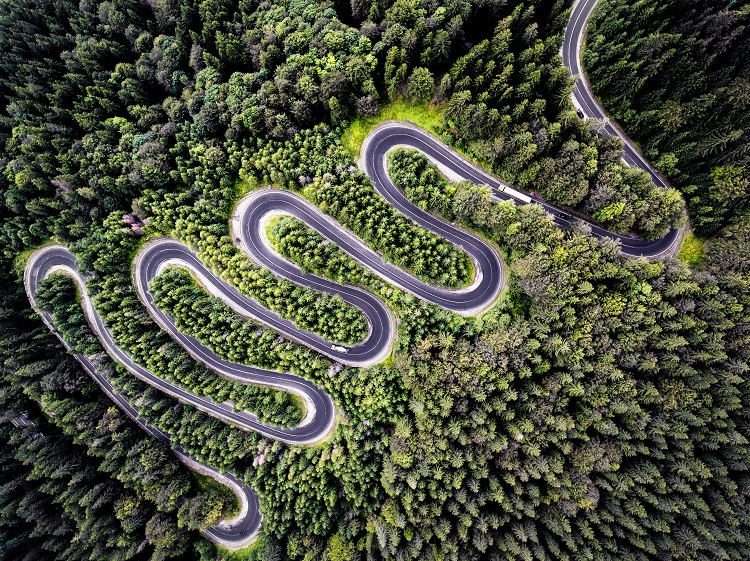
Photo: Calin Stan / TheDrone.ro
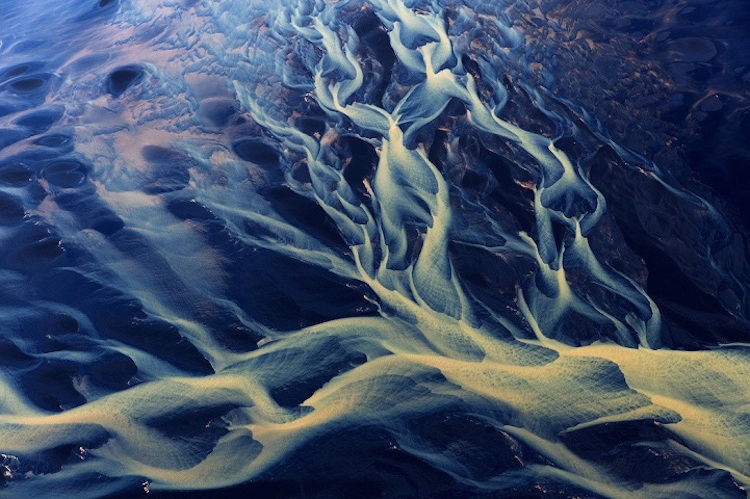
Photo: Zack Seckler
What’s the most challenging part of aerial photography?
Zack Seckler:
The most challenging aspects of aerial photography depend on what you’re photographing and from what type of vehicle you’re photographing it from. Shooting from a helicopter offers many benefits, but it doesn’t allow you to get too low to the ground without creating a noticeable effect on the landscape itself—especially if you’re over water or loose dirt. Shooting from a small plane allows you to get low to the ground, but it’s more challenging to frame your shot as the plane is constantly moving.
Photographing wildlife from the air can be very challenging. The most difficult part, like my most recent trip to South Africa, was actually finding the animals. From just a couple thousand feet up the animals are extremely difficult to spot… they blend right into the environment.
Gear recommendations: When shooting from a helicopter, I prefer to use medium format equipment. Specifically, the Phase One IQ backs on the new XF body. The Schneider leaf shutter zoom lenses are fantastically sharp and offer flexibility with quickly changing views. When shooting from a plane, I prefer the Canon 5DSR camera body with one of their L zoom lenses. Shooting 35mm with a plane allows for more frames per second…something that is very handy when moving quickly across a scene.
Visit Zack Seckler’s website and follow him on Instagram. Read more: Stunning Aerial Shots of Iceland’s Shores Look Like Emotional Abstract Paintings
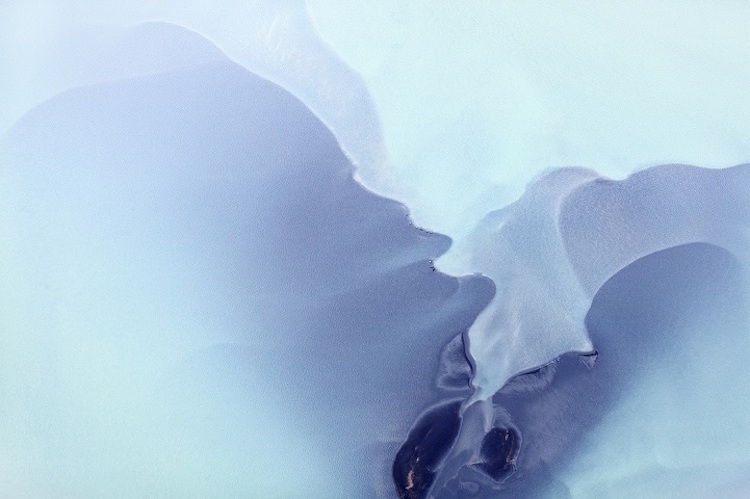
Photo: Zack Seckler
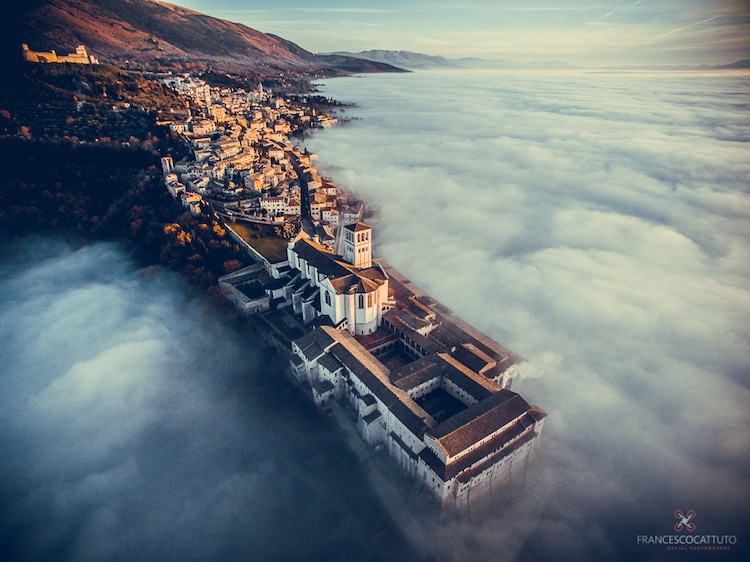
Photo: Francesco Cattuto
Francesco Cattuto:
The first challenge is to be able to take off… legally. Every country has its own drone regulations, often very restrictive, that limit the ability to fly in so many spaces. Getting the necessary permissions can become very complicated. Another thing to consider is the time. With a drone, the battery life is limited; 25 minutes may seem like a lot, but in some cases, reaching the shooting point, choosing the best composition of the image, setting all parameters, taking the right shot is not so immediate. I found myself in situations where I only had a few seconds to take the right photo and go back at home with the energy needed to land, no more!
In terms of image composition, there are several challenges to be faced. When I have my camera in hand, before I shoot, I can imagine how changing the point of view will alter the image. Just moving a few inches up or down will produce completely different picture. With aerial photography, we add an extra dimension to complicate everything because we are not so accustomed to seeing things from above. Moving upwards, you’re adding a fantastic degree of freedom that can give you incredible views, but on the other hand it becomes more complicated because it’s very difficult to imagine what you can see from there.
Gear recommendations: I have always used a DJI drone, a Phantom 3 Pro as the first drone, and a Phantom 4 Pro now. It gets a better camera with a 1-inch sensor and a wide f/2.8 aperture. It also sports a mechanical shutter that eliminate the “rolling shutter” effect. This CMOS sensor can also shoot 20mpx RAW still images and capture up to 11 stops of dynamic range so you get better aerial footage even when your scene has complicated lighting. Absolutely stunning!
Visit Francesco Cattuto’s website. Read more: Amazing Winners of the 2016 International Drone Photography Contest
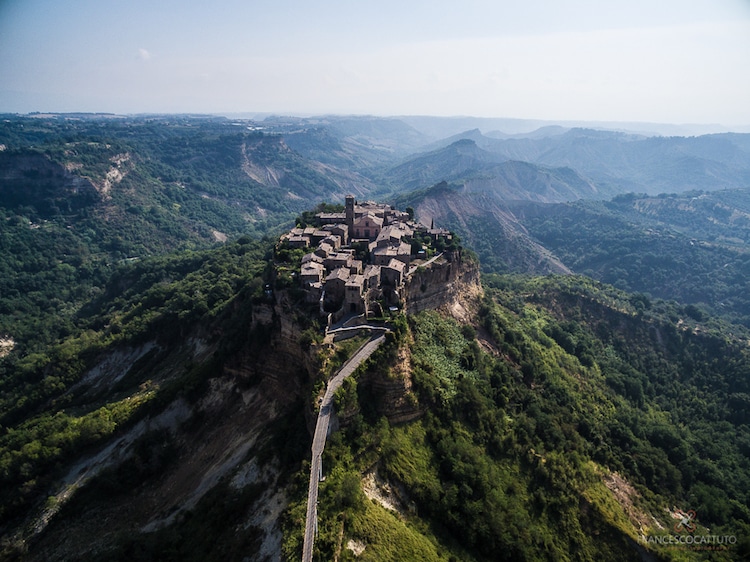
Photo: Francesco Cattuto
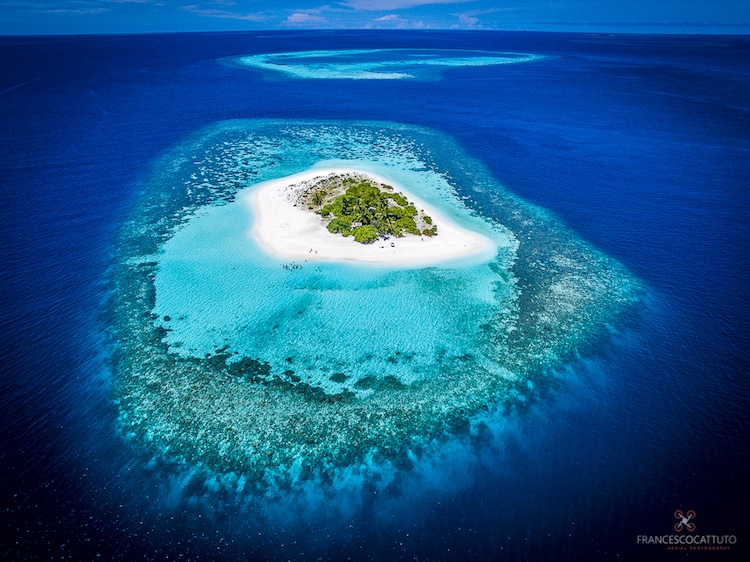
Photo: Francesco Cattuto
What’s your favorite aerial photograph you’ve taken and why?
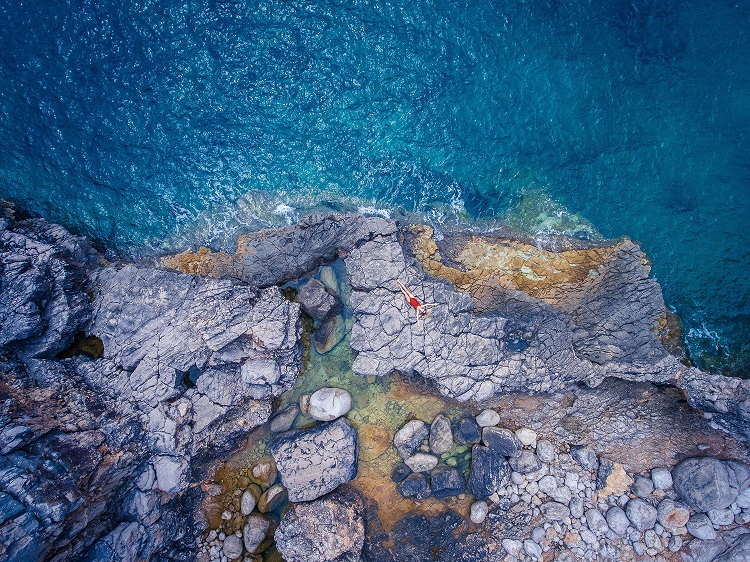
“Lady in Red,” Placido Faranda’s favorite aerial photograph he’s taken.
Photo: Placido Faranda
Placido Faranda:
My favorite picture is Lady in Red, the picture who made me a finalist at the 2017 Sony World Photography Awards. However, the reason is not (only) related to the award. This picture reminds me every day how perseverance is important when you are blessed with a passion (and this is especially true with photography).
I discovered Veslo Bay (the small cove where I shoot this picture) while on vacation in Montenegro. As soon as I got there, I realized how that place was a perfect spot for a picture I had in mind for a while. That day the weather was magnificent, with incredible colors all around.
Helas, my drone was left at our hotel (1 hour away with curvy and tight roads) and there were only 2 days left before our departure. I didn’t sleep at night, thinking about returning there the day after. However, the day after starts with rain… lasting all day long! I was incredibly upset.
The last day of our vacation the weather was still cloudy. My ex-wife, the Lady in Red(!), who has always been the strongest supporter of my passion, accepted to go back there to wait several hours hoping that the sun would come out. And that’s what happened! She had to swim to the other side of the cliff in order to reach the place where the picture was taken, as it was accessible only in that way. We were communicating to each other screaming from a cliff to the other in order to compose the shot. But I made it, and the moment the image appeared on my iPad I was thrilled!
The most important thing about all this story is that at that time I wasn’t even thinking about the Sony Awards, neither about any other contest participation. I was just doing what I loved, with a person who supported me while doing it.
Gear recommendations: Since day one I always used DJI products. If they are the leader in the market it is for a reason; their drones are the best products available today in the consumer segment.
I started with a Phantom 4, and I moved to Phantom 4 Pro last December. Both impressive machines and capabilities for the price. I get a lot of messages from people asking me what’s best between the Phantom and Mavic, as I own as well a Mavic Pro for portability sake. While I prefer shooting and flying the Phantom, the old good saying “the best camera is the one you have with you” is valid for as well for drones and the Mavic fits the bill with his ultra compact size when I can’t bring with me the Phantom for space/weight concerns.
Visit Placido Faranda’s website and follow him on Instagram. Read more: Stunning Shortlist for the Sony World Photography Awards 2017 Announced
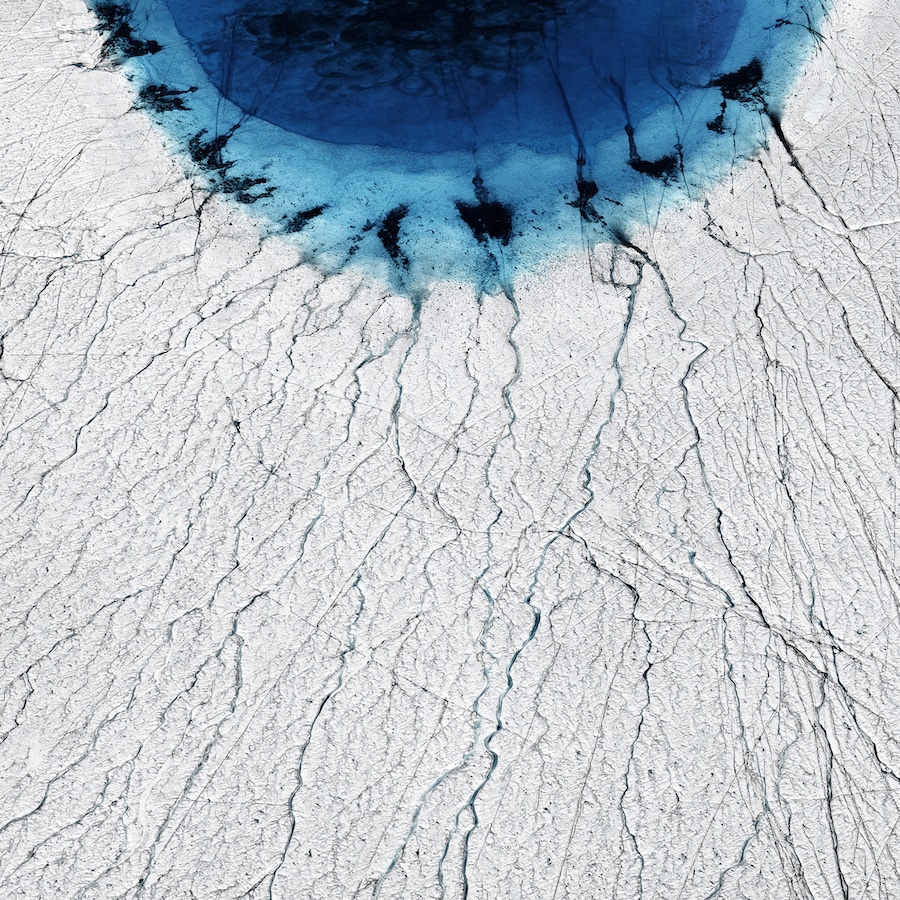
“THAW #1,” Timo Lieber’s favorite aerial photograph he’s taken.
Photo: Timo Lieber
Timo Lieber:
Having traveled to the Arctic numerous times and having seen the rate of change there, I have long wanted to capture the impact of global warming on the Arctic and translate it into striking photographic images. The Greenland ice sheet has been losing mass rapidly over the past few years and it is a major contributor to global sea-level rise—undoubtedly escalated by man’s contribution to global warming. And I really wanted to make he world more aware of what’s going on.
THAW #1 is my favorite image of the series. It looks to me like an eye, almost as if global warming is looking right back at us. ⠀
To make the story of THAW more than just a photography series, I teamed up with leading glaciologists, including the Scott Polar Research Institute in Cambridge. Whilst I capture the moment, the scientists provide the background and points of comparison.
Gear recommendations: I am currently shooting with the Phase One XF 100MP medium format camera. What this system records is so much more than what a human eye can ever see. The best proof: my printer, who has worked with many professional photographers over the years, nearly fell off his chair when he first looked at the 100 megapixel files.
Together with my gyro, it is a heavy set-up and you will feel your arms after a few hours of shooting. But having said that, it remains the most sensational camera system that currently exists in my view. Every time I pick up one of my large-scale prints, I cannot help but smile knowing it doesn’t get better than this—at least for now.
Visit Timo Lieber’s website and follow him on Instagram. Read more: Eye-Opening Photos Capture the Terrifying Beauty of Melting Polar Ice Caps
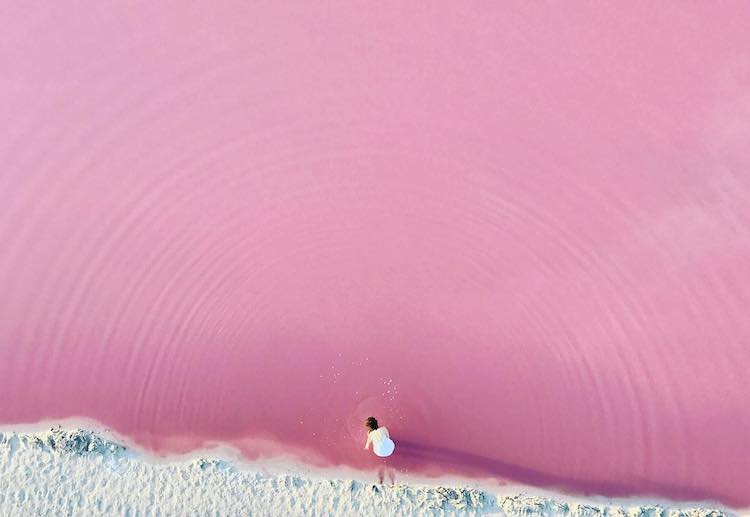
“Beta carotene,” Reuben Wu’s favorite aerial photograph he’s taken.
Photo: Reuben Wu
Reuben Wu:
Beta carotene is my favorite aerial photograph. I like it because I wasn’t expecting so many aspects of the image. The ripples in the water and the vibrancy of the pink really took on a new dimension from above.
It’s also an iPhone photo. I was experimenting how to attach an iPhone to the drone (just because) and to trigger the camera at intervals using an app.
Visit Reuben Wu’s website and follow him on Instagram. Read more: Photographer Attaches LED to Drone for Hauntingly Beautiful Photos at Night
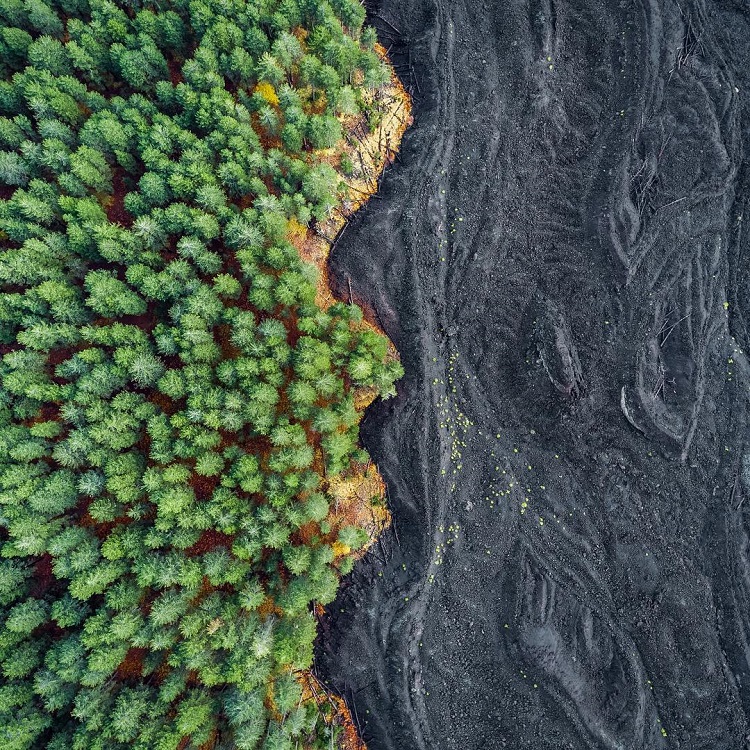
Photo: Placido Faranda
Interviews have been edited for length and clarity. My Modern Met granted permission to use photographs by the respective photographers.
Related Articles:
Flocks of Sheep Roam Across the Tuscan Countryside in Breathtaking Aerial Photos
Breathtaking Aerial Photos Offer Unique Perspective of Melbourne
Stunning Aerial Views of Iceland by Sarah Martinet
Spectacular Aerial Photos Reveal Intricate Beauty of Our World
Spectacular Aerial Shots of International Airports
The post 10 Aerial Photographers Reveal How They Capture the World from Above appeared first on My Modern Met.
Source: mymodernmet.com
